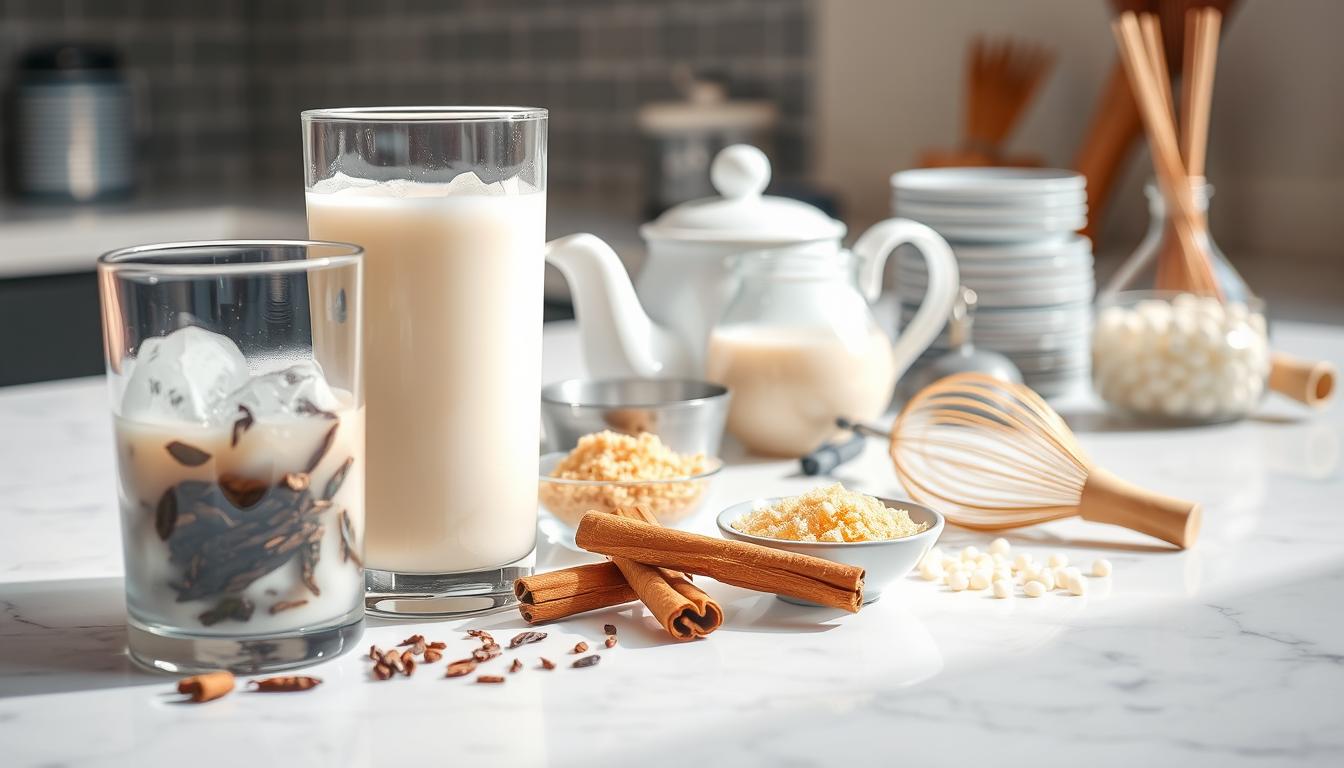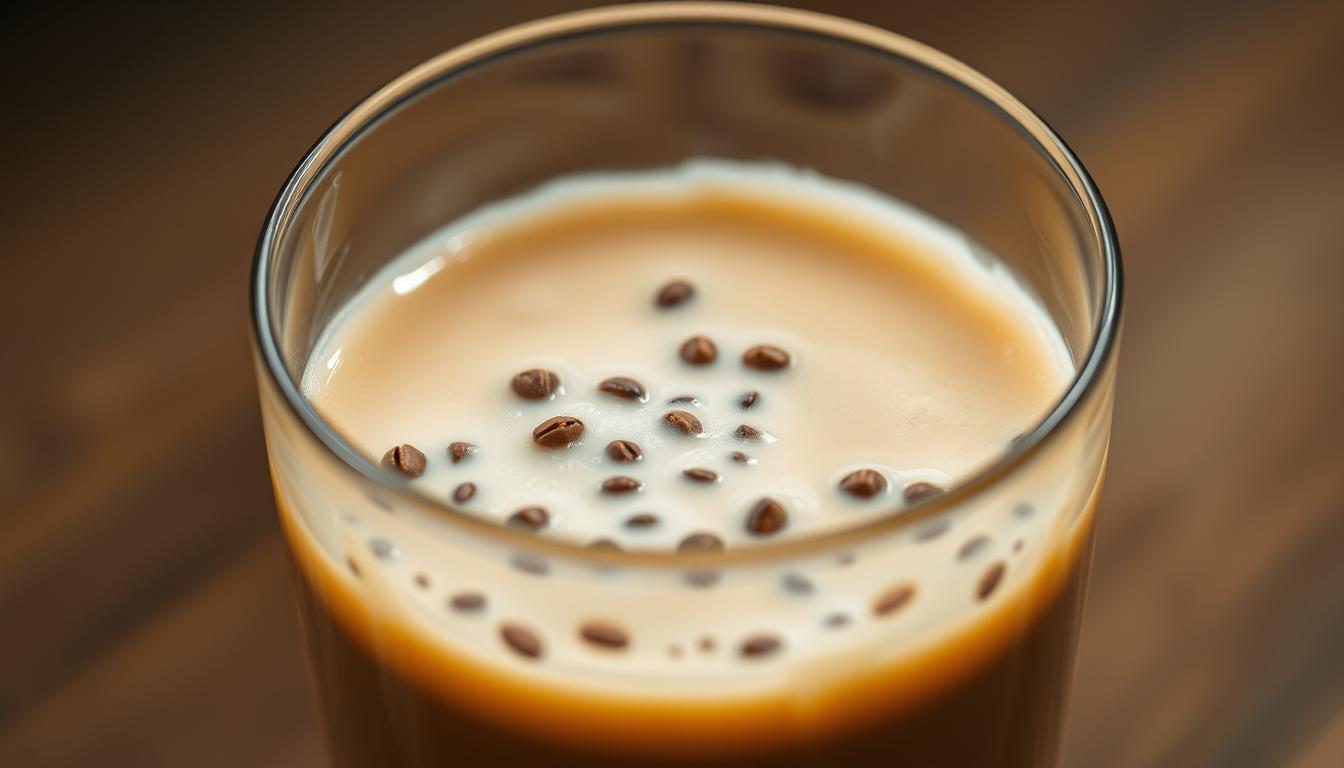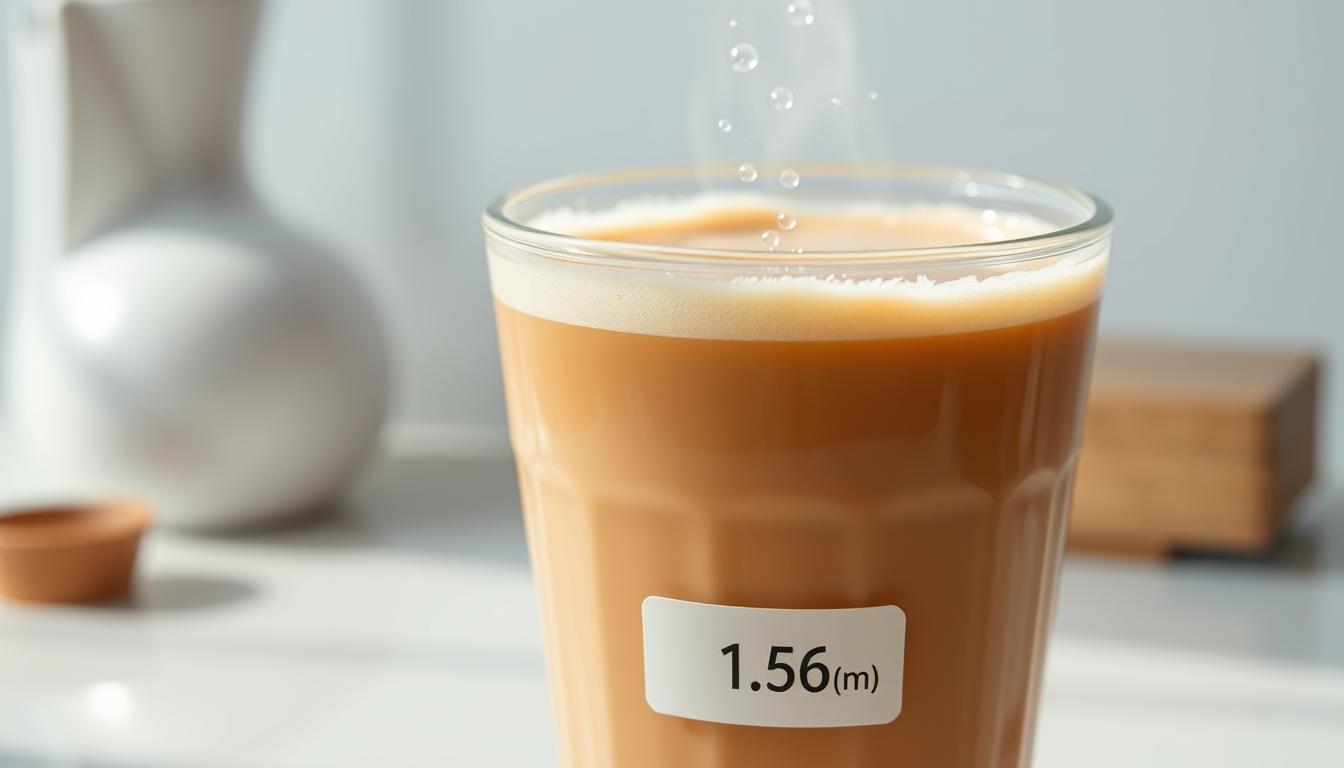Did you know that over 158 million Americans drink tea daily? Among the many varieties, milk tea stands out as a creamy, comforting favorite. But here’s the question: does this beloved drink pack a caffeinated punch?
Most milk tea recipes rely on tea brewed from the Camellia sinensis plant, which naturally contains caffeine. Whether it’s black, green, or oolong, the tea base determines the caffeine content. Even with the addition of milk, which softens the flavor, the caffeine remains intact.
The exact amount can vary depending on the type of tea used and how it’s prepared. For example, a cup of black tea-based milk tea will likely have more caffeine than one made with green tea. This makes it essential to know what’s in your drink if you’re monitoring your intake.
Curious about how milk tea compares to other popular beverages like bubble tea? Stay tuned as we dive deeper into brewing methods, ingredient variations, and more in the sections ahead.
Key Takeaways
- Milk tea typically contains caffeine from its tea base.
- The caffeine content depends on the type of tea used, such as black or green.
- Milk softens the flavor but doesn’t neutralize the caffeine.
- Different brewing methods can affect the caffeine levels in your drink.
- Understanding the tea base helps manage your caffeine intake.
What is Milk Tea? A Brief Introduction
From bustling streets in Taiwan to cozy cafes in the UK, milk tea is a global favorite. This creamy beverage combines the boldness of tea with the richness of milk, creating a drink that’s both comforting and indulgent. Its versatility and unique flavor have made it a staple in many cultures.

History and Origins
Milk tea’s roots trace back to ancient traditions. In the UK, it became popular during the 17th century as a way to soften the strong taste of black tea. Meanwhile, in Taiwan, it evolved into a modern phenomenon with the rise of bubble tea in the 1980s. Today, it’s enjoyed in countless variations worldwide.
Key Ingredients and Variations
The base of milk tea is typically tea made from black or green varieties. Black tea offers a robust flavor, while green tea provides a lighter, more delicate taste. The addition of milk enhances the drink’s creaminess, with options ranging from dairy to plant-based alternatives like almond or oat milk.
Regional preferences often influence the ingredients and preparation methods. For example, in Hong Kong, evaporated milk is commonly used, creating a rich and sweet flavor. In contrast, Indian chai incorporates spices like cardamom and ginger for a warm, aromatic twist.
| Type of Tea | Flavor Profile | Common Milk Used |
|---|---|---|
| Black Tea | Bold and robust | Whole milk, evaporated milk |
| Green Tea | Light and delicate | Almond milk, oat milk |
| Oolong Tea | Earthy and smooth | Soy milk, coconut milk |
These ingredient choices not only shape the flavor but also affect the caffeine content. In the next section, we’ll explore how the type of tea and brewing method influence this aspect.
Does milk tea have caffeine? Exploring the Facts
Ever wondered what gives milk tea its energizing kick? The answer lies in its tea base. Whether it’s black, green, or oolong, the caffeine content comes directly from the leaves of the Camellia sinensis plant. Even with milk added, the stimulant properties remain intact.

Caffeine Sources in Milk Tea
The primary source of caffeine in milk tea is the tea itself. Black tea typically contains the highest amount, followed by oolong and green varieties. The time the tea is steeped also plays a role—longer brewing extracts more caffeine per serving.
Interestingly, the addition of milk doesn’t neutralize the caffeine. While it softens the flavor, the stimulant effects remain unchanged. This makes it essential to consider the type of tea used when monitoring your intake.
Influence of Tea Type and Brewing Method
The amount of caffeine in milk tea can vary widely. For example, black tea contains about 40-70 mg per cup, while green tea offers 20-45 mg. Oolong falls somewhere in between, making it a balanced choice for those seeking moderate stimulation.
Brewing time and temperature also impact the final caffeine content. Steeping tea for longer periods or using hotter water increases extraction. This means a cup of milk tea can have more or less caffeine per serving depending on how it’s prepared.
Quality and processing of the tea leaves further influence the results. Higher-grade teas often release caffeine more efficiently, leading to a stronger brew. Understanding these factors helps you tailor your drink to your preferences.
Caffeine Content in Traditional Tea-Based Drinks
Understanding the caffeine levels in traditional tea-based drinks can help you make informed choices. Whether you prefer a bold black tea, a light green tea, or a balanced oolong tea, the content varies significantly. Let’s break down the details to see how they compare.
Comparing Black, Green, and Oolong Tea
When it comes to caffeine, black tea leads the pack. An 8-ounce serving typically contains 40-70 mg, making it a strong choice for those seeking a boost. The robust flavor of black tea is a result of its fully oxidized tea leave material, which also enhances caffeine extraction.
On the lighter side, green tea offers 20-45 mg per serving. Its minimal oxidation process preserves delicate flavors while delivering a milder caffeine kick. This makes it a popular option for those who want a gentler stimulant effect.
Oolong tea sits in the middle, with caffeine levels ranging from 30-50 mg per serving. Its partial oxidation creates a smooth, earthy flavor that appeals to many tea enthusiasts. The tea base quality and steeping time play a crucial role in determining the final caffeine content.
Factors Influencing Caffeine Levels
The tea base quality, steeping time, and water temperature all impact caffeine extraction. Higher-grade tea leave material often releases caffeine more efficiently, resulting in a stronger brew. Steeping for longer periods or using hotter water can also increase the caffeine content per serving.
“The type of tea and how it’s brewed can make a significant difference in caffeine levels.”
While coffee is known for its high caffeine levels, traditional tea-based drinks offer a milder alternative. Understanding these differences helps you choose the right drink for your needs. Next, we’ll explore how milk tea variants like bubble tea compare in terms of caffeine content.
Comparing Milk Tea with Bubble Tea and Other Variants
Bubble tea has taken the world by storm, but how does it stack up against classic milk tea? Both drinks share a creamy base, but their ingredients and preparation methods set them apart. Let’s dive into the details to understand their unique appeal.
Bubble Tea: Caffeine Levels and Preparation
Bubble tea, also known as boba tea, combines tea with chewy tapioca pearls or other toppings. The caffeine content varies depending on the tea base used. For example, a serving of black tea-based bubble tea typically contains 30-50 mg of caffeine, while green tea versions offer slightly less.
Preparation plays a key role in caffeine levels. Many shops use a less concentrated tea base for bubble tea, which can result in lower caffeine per serving compared to traditional milk tea. The addition of tapioca pearls or fruit jellies adds texture but doesn’t affect the caffeine content.
Decaffeinated Options and Customizations
For those sensitive to caffeine, decaffeinated bubble tea is a great alternative. Many shops offer herbal or fruit-based options that are naturally caffeine-free. These drinks still feature the signature boba or pearl toppings, making them just as enjoyable.
Customization is another highlight of bubble tea. From adjusting sweetness levels to choosing plant-based milk, customers can tailor their drink to their preferences. Matcha bubble tea is a popular choice for those seeking an energizing yet balanced option, as it combines the earthy flavor of matcha with the fun of boba.
“The beauty of bubble tea lies in its versatility—there’s something for everyone, whether you’re a caffeine lover or not.”
Ultimately, the choice between milk tea and bubble tea comes down to personal taste. While milk tea offers a classic, creamy experience, bubble tea adds a playful twist with its chewy pearls and endless customization options.
Nutritional Insights and Health Considerations
Milk tea offers a delightful blend of flavor and nutrition, but how does it stack up health-wise? Understanding its nutritional profile and the effects of its caffeine content can help you make informed choices.
Nutritional Breakdown of Milk Tea
A typical serving of milk tea contains around 150-200 calories, depending on the ingredients. The milk adds a creamy texture and contributes to the drink’s fat and protein content. However, the sugar levels can vary widely, with some recipes containing up to 30 grams per serving.
Compared to a cup coffee, milk tea often has fewer calories but more sugar. For example, a black coffee typically has less than 5 calories and no sugar, making it a lower-calorie option. However, milk tea’s unique taste and creaminess make it a popular choice for those seeking a richer experience.
Health Implications of Caffeine Consumption
Milk tea contains an average of 35.6 mg of caffeine per serving, which is less than a standard cup coffee (95 mg). This amount caffeine is generally safe for most people, but those sensitive to stimulants should monitor their intake. Excessive caffeine can lead to sleep disturbances or increased anxiety.
Choosing a type of tea with less caffeine, such as green or herbal varieties, can help reduce these effects. Additionally, adjusting the brewing time or opting for decaffeinated options allows you to enjoy the taste without the stimulant impact.
Moderation is key when consuming milk tea. By understanding its nutritional components and caffeine levels, you can make choices that align with your health goals. Whether you prefer a classic recipe or a customized version, there’s a way to enjoy this drink while staying mindful of your well-being.
Conclusion
Milk tea blends rich flavors with a touch of energy, making it a beloved drink worldwide. Most versions contain caffeine, with the caffeine content varying based on the tea base used. Black, green, and oolong teas each bring unique levels of stimulation to your cup.
Brewing time and serving size also play a role in the final amount. For those sensitive to caffeine, decaffeinated options or herbal blends offer a great alternative. Exploring creative variants like bubble tea can add a fun twist to your experience.
Whether you enjoy traditional milk tea or experiment with modern recipes, understanding the science behind it enhances your enjoyment. Share your favorite combinations and discover new flavors to savor.

